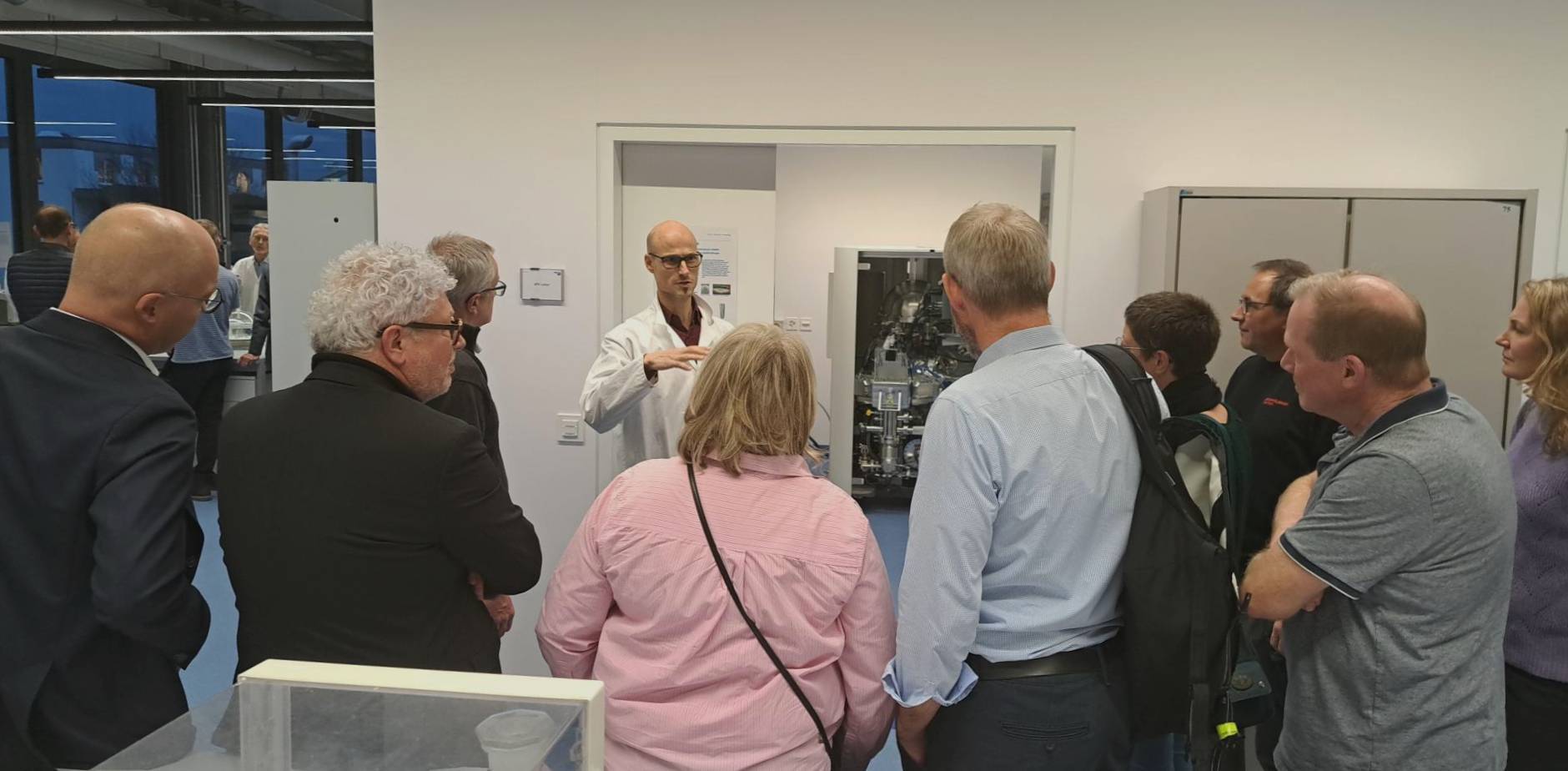IL-15: Notch impact test: Measurement of the charpy impact toughness
Materials that deform plastically at low loading rate and hereby absorb much deformation energy may become brittle at high loading rate, especially under impact or notched conditions. Products and materials with low impact toughness will break brittle and after low plastic deformation. The Charpy notched impact test is an ideal tool to assess the effect of loading under striking conditions on the failure mode of materials.
Products like surgical instruments (rasps, impactors, etc.) may be subjected to hammer strokes depending on the specific application. Therefore, they have to be produced with materials that based on their composition and heat treatments are able to withstand such impact stresses without failure. The RMS foundation has equipment to test this property, the so-called Charpy notch impact testing machine (Figure 1).
![]()
Figure 1: Charpy notch testing machine
A geometrically standardized sample having either a U – or a V-shaped notch is hit on the un-notched side by a falling pendulum hammer. This provokes the deformation and the breakage of the sample, and reduces accordingly the kinetic energy of the hammer. As a result, the maximum height that the hammer can reach after breaking the sample – documented by a trailing pointer – is reduced. The difference of height between the initial position of the hammer and its position after the swing up shown by the trailing pointer can be measured digitally and converted into the energy lost to deform and break the sample. This impact energy is expressed in Joules (J). Generally, this property is temperature dependent: a ductile behavior is generally found at «high» temperature and a brittle behavior at «low» temperature. This so-called ductile-brittle transition is a function of the material properties, mainly given by the lattice structure of the crystal (Figure below).
![]()
Figure 2: Temperature dependence of the impact energy for a material with a characteristic ductile to brittle transition curve.
The characterization of the fracture surfaces with an optical and/or a scanning electron microscope provides additional information on the material behavior. Based on the macro- and microscopic pattern of the fractured surfaces, it is possible to evidence the ductility or toughness and to differentiate between brittle and ductile fractures (Figure below).


Figure 3: Macroscopic appearance of the fracture surface of notched impact specimens. Above: Brittle fracture. Below: Mixed fracture with ductile parts.
Equipment:
Zwick/Roell pendulum impact testing machine RKP 450 GE with a maximum energy capacity of 450 Joule, actually equipped with a 300 Joule pendulum head.
- Measurements are possible at ambient temperature, with cooled specimens (down to –196 °C when stored in liquid nitrogen) and at elevated temperature
- Round robin test: After putting into service and calibration according to DIN EN ISO 148-2, the validation and determination of measurement uncertainty was performed via an international interlaboratory study on the energy levels 20 J, 50 J and 150 J. It was proven that the stroke energy at ambient temperature lies within the accepted range according to DIN EN ISO 148-2 for all three levels. The Charpy impact test is an accredited service of the RMS Foundation.
